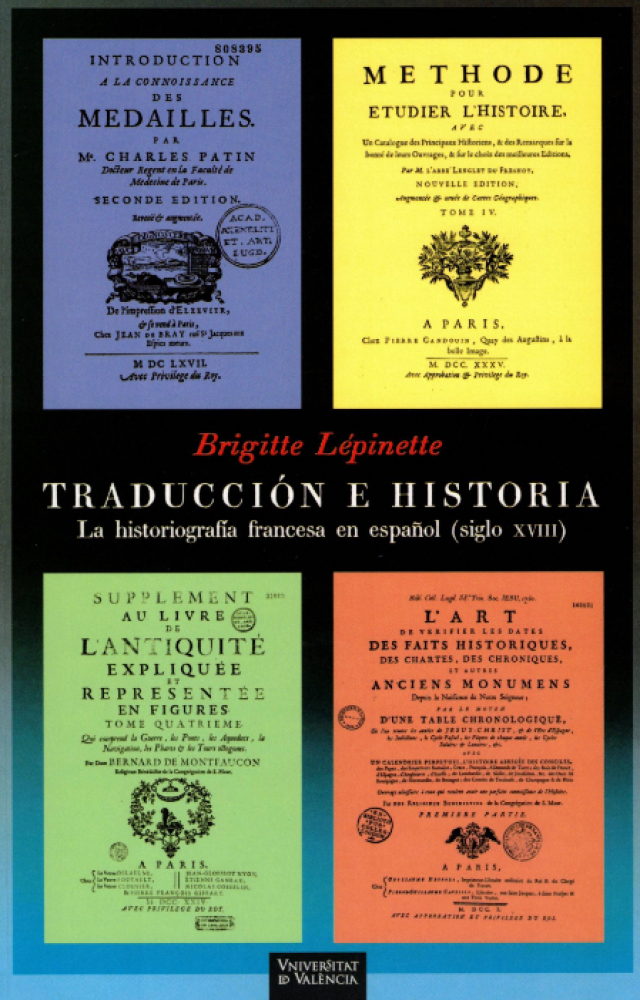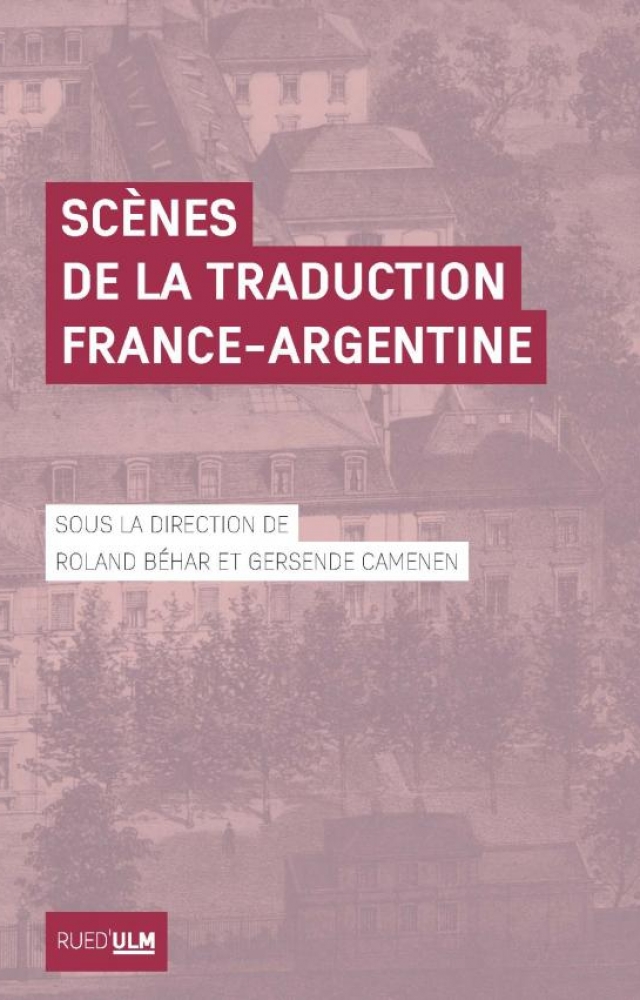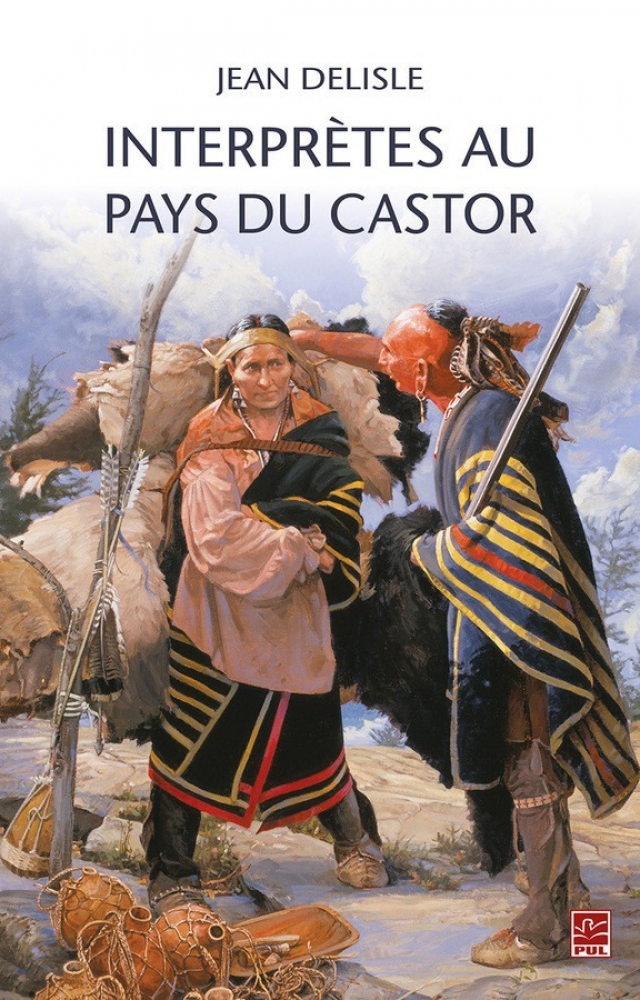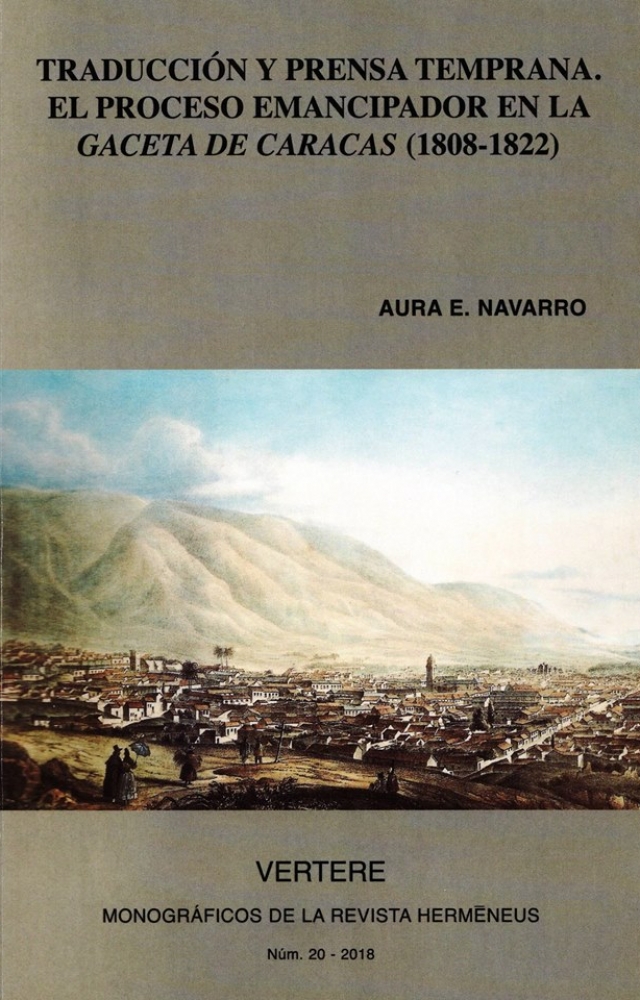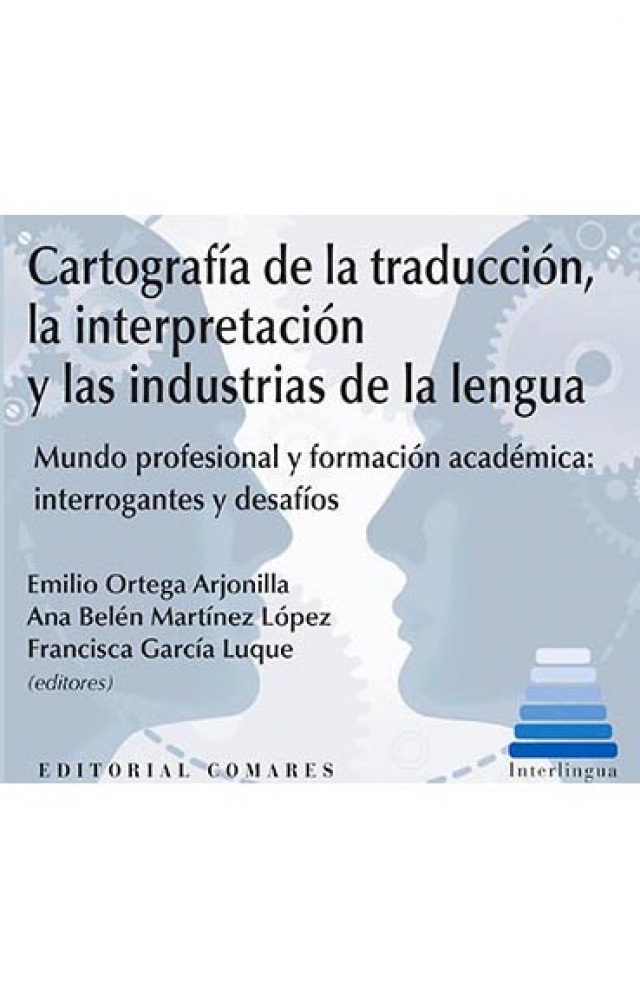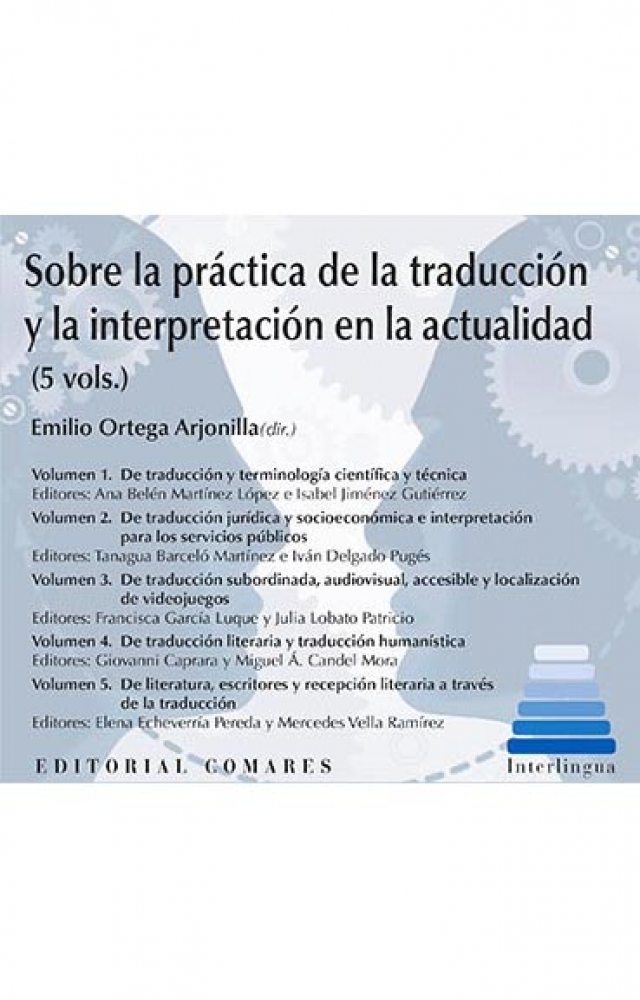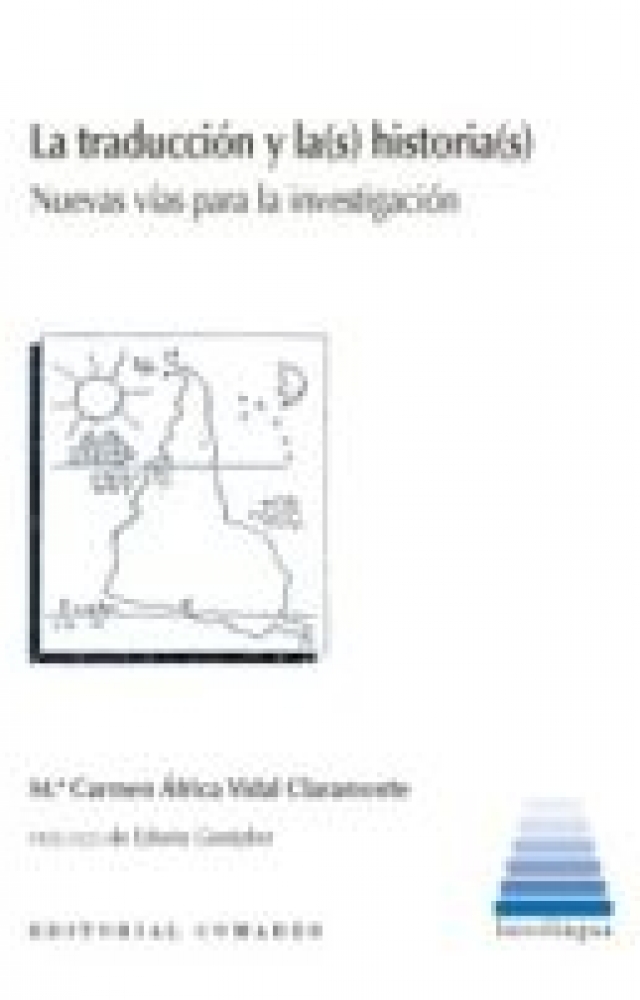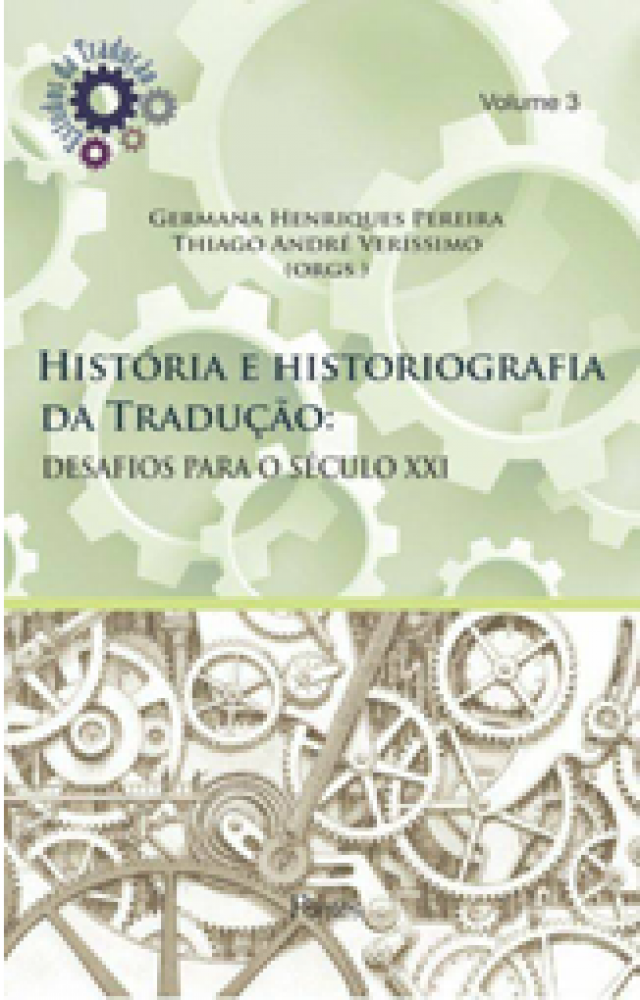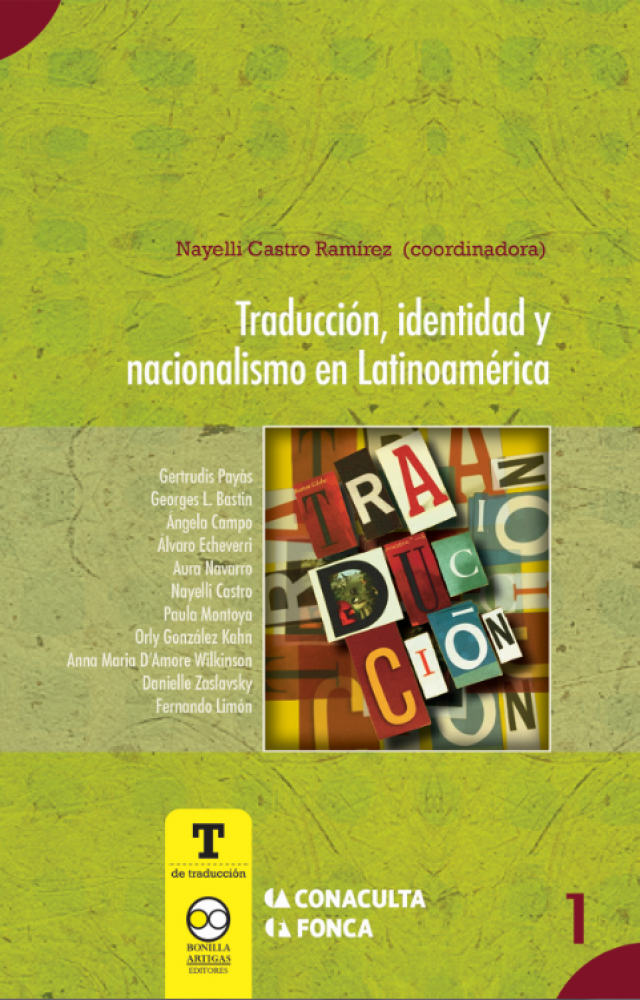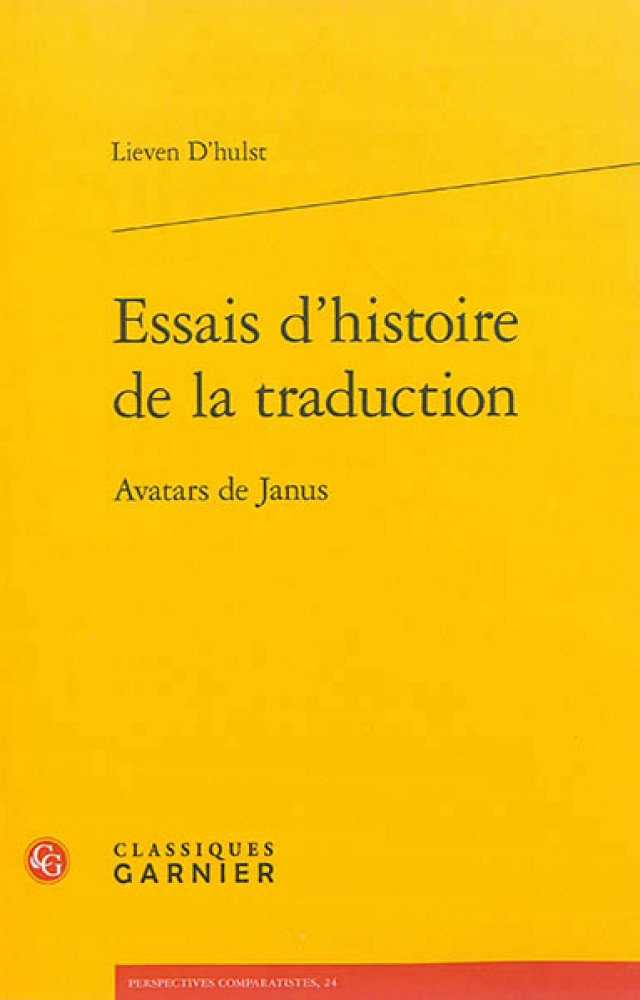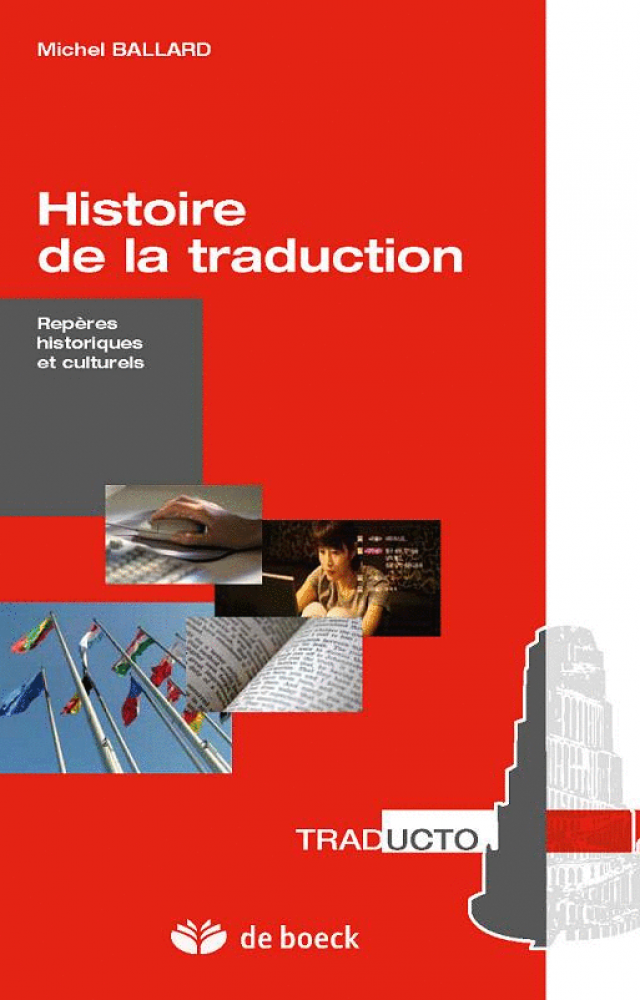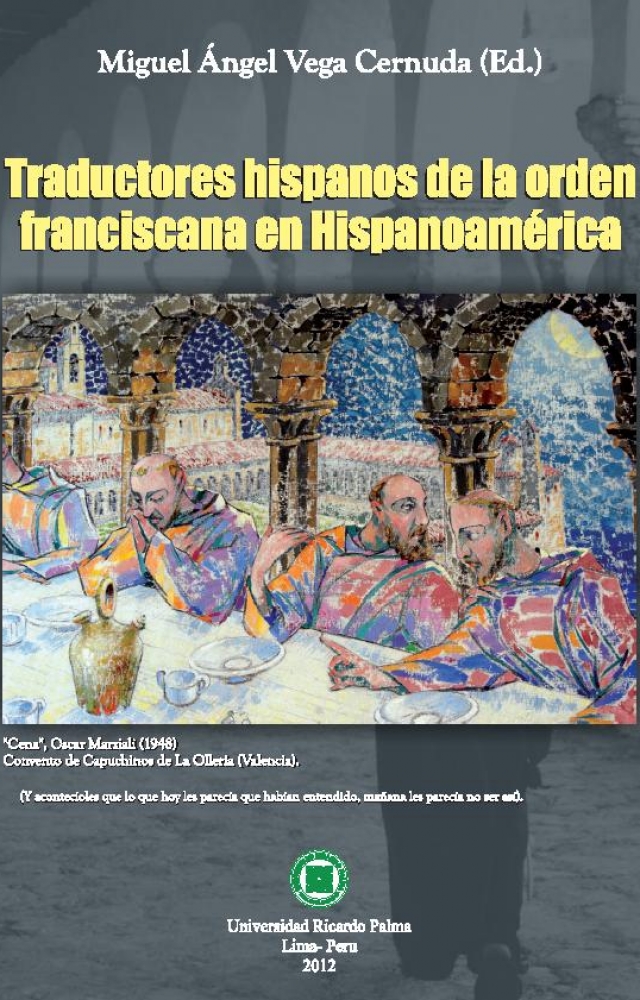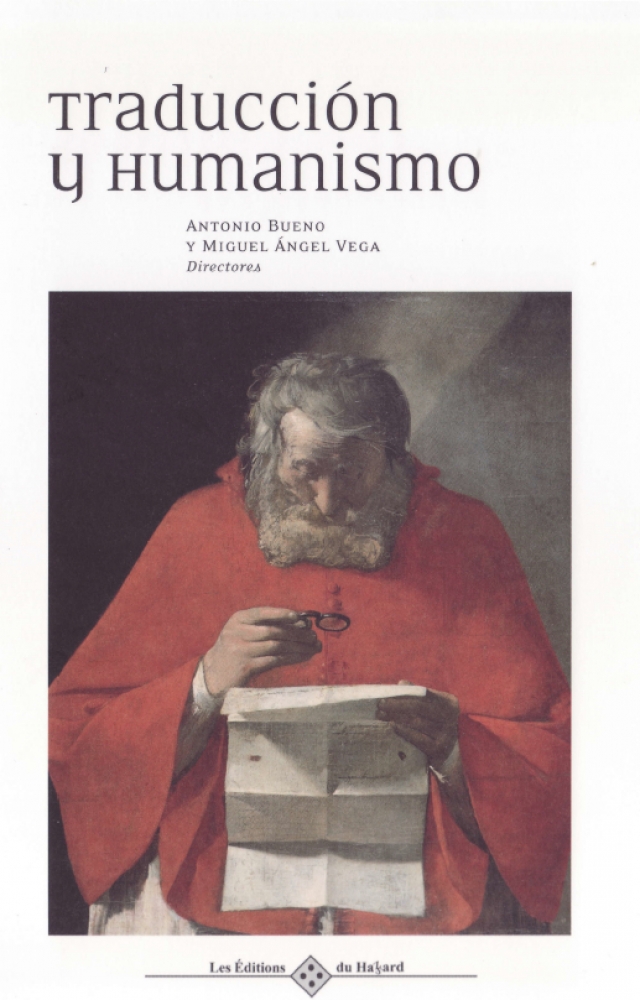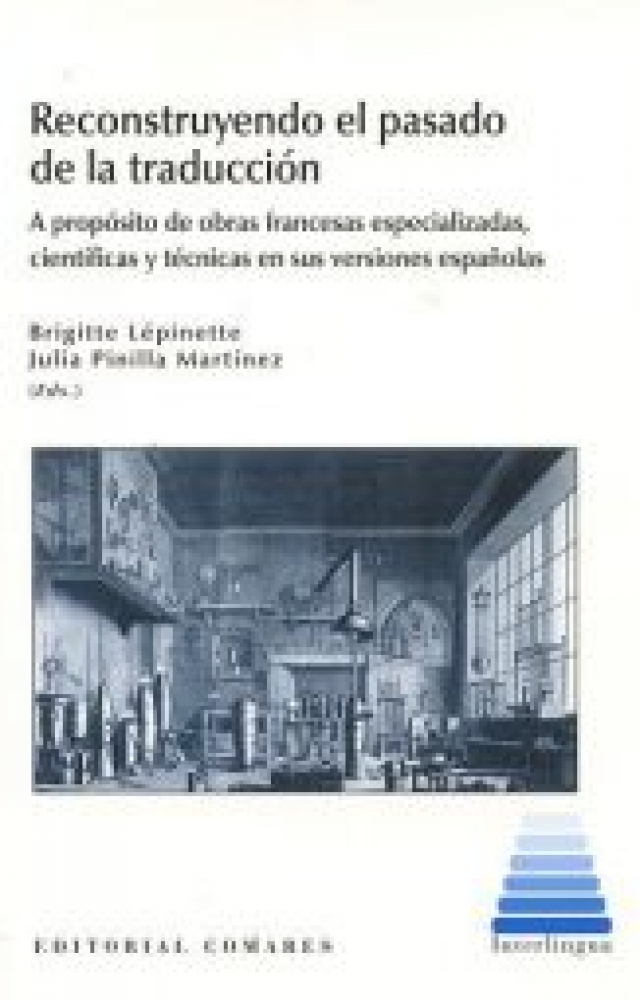Latin American tradition
Georges L. Bastin
Translated from Spanish by Mark Gregson
Routledge Encyclopedia of Translation Studies 1997, pp.505-512.
Version PDF
Like Latin America itself, the history of translation in the subcontinent is both uniform and diverse. This is a reflection of the basic cultural unity which grew out of that paradoxical merging of the Hispanic with the indigenous. Indeed, the most representative figure in Latin American translation, Malinalli Tenépal, is a veritable symbol of this cultural mix. Better known as MALINCHE, this controversial Aztec woman was among the first interpreters on the American continent to contribute to the process through which the peoples of the so-called New World enriched the knowledge and ideas of the Old.
Discovery and conquest (1492-1533)
When Columbus first set foot in America he was faced with about 1,000 languages from around 133 language families. The main ones were Aztec (with over 20 dialects) in Mexico and North and Central America; Maya-Quiche and Nahuatl in Mexico and Central America; Chibcha on the Colombian plateau; Carib in the Antilles and Venezuela; Tupi-Guarani in Paraguay, Uruguay and northern Argentina; Aymara and Quechua in Ecuador, Peru and Bolivia; and Araucan in Chile. Despite the lack of historical evidence, there can be no doubt that substantial contact between the various tribes took place, which in turn implies the existence of interpreters.
Interpreters were widely used from the very beginning of the Conquest, since the Spanish authorities and the Native Americans had no understanding of each other’s languages. Indirect evidence can be found in the large number of terms by which interpreters were known, such as lenguas, lenguaraces, farautes, trujumanes and (in the case of Nahuatl) naguatlatos.
Of course the Spanish monarchs took great pains to encourage their new subjects to learn the European language, issuing a stream of edicts to the effect that the Native Americans should be taught to read and write in Spanish. A 1550 law, for example, ordered sextons to teach the language to native children. However, such commands fell on deaf ears, both during this and later periods, because the evangelization process was carried out in the indigenous languages. The situation remained unchanged even when a 1770 royal edict, issued against the wishes of the missionaries, outlawed the Native American languages.
Thus in practice the indigenous languages continued to be the vehicle for evangelization and oral contact, while Spanish (or Latin) was invariably used for written documents. The oldest translations printed on the American continent are – not surprisingly – religious works: in Mexico, Breve y más enjundiosa doctrina cristiana en lengua mexicana y castellana; and in Lima, a similar doctrinal text in Spanish, Quechua and Aymara.
The interpreters
It was appreciation of the important role interpreting would play in the Conquest that led Columbus to take two interpreters on his first voyage: Rodrigo de Jerez had spent some time in Guinea, while Luis de Torres supposedly spoke Hebrew, Chaldean and Arabic. They were obviously unable to use their foreign languages on the American continent. This initial experience made the colonizers aware of the need to train interpreters, and Columbus took 10 natives back to Europe precisely so that they could acquire knowledge of the Spanish language and culture, a policy he maintained throughout future voyages. On his return to America, Columbus was accompanied by two interpreters, Alonso de Cáceres and a young boy from Guanahani (the Bahamas) who was given the name Diego Colón.
Subsequent expeditions followed the same pattern. In 1499 Alonso de Ojeda, Juan de la Cosa and Amerigo Vespuccio took captives to serve as lenguas (literally, ‘tongues’). Ojeda actually married his native interpreter and guide, Isabel. In 1518 Juan Grijalba took two natives to Yucatán as interpreters, Julianillo and Melchorejo, who had been captured the previous year by Captain Francisco Hernández de Córdoba. Melchorejo also accompanied Cortés on his first visit to Yucatán, along with another native called Francisco. Natives were captured along the Venezuelan coast by Admiral Vicente Yáñez Pinzón and taken to Santo Domingo for service as interpreters on future expeditions. Thus the first generation of Latin American interpreters were mainly natives who were captured and then taught Spanish. However, mention should also be made of those Spaniards who arrived on the early voyages and for various reasons ended up living among the indigenous tribes. Several of these eventually acted as interpreters, some after being recaptured and pressed into service, others reuniting voluntarily with the conquest group. Whether Native American or Spanish, these pioneering interpreters played an important part in the initial encounter between the two cultures.
Central America and the Antilles
It is reasonable to assume that interpreters were as important to Cortés as the warriors from Tlaxcala and the other allies who eventually enabled him to conquer Mexico. Bernal Díaz de Castillo (Rosenblat 1990: 78-9) mentions that Cortés employed as many as three interpreters at one time: he would speak in Spanish to Aguilar, who would then translate into Maya for the Yucatec natives; MALINCHE would interpret from Maya into Nahuatl for the Mexican tribes; and Orteguita, a Mexican boy, would check whether Malinche’s words corresponded to what Cortés originally said.
Aguilar (whose full name was Jerónimo de Aguilar) was a Spanish clergyman who survived Juan de Valdivia’s shipwrecked expedition in 1511 and was taken captive on the island of Cozumel, where he lived with the Mayas for eight years before being freed by Cortés; from there he accompanied Cortés as his lengua throughout the Mexican conquest campaign.
MALINCHE (also known as Malintzin and Doña Marina) was born in a village near Coatzacoalcos. As a girl she was sold to slave traders and ended up in Tabasco, where she formed part of a group of 20 women given away to Cortés in 1519. One day, when Aguilar was unable to understand the language of some Mexican natives, Malinche started to converse with them, and between them they managed to establish communication with the natives, Malinche translating from Nahuatl to Maya and Aguilar from Maya to Spanish. This prompted Cortés to promise Malinche her freedom in return for her acting as his interpreter and secretary. She became much more than this – his companion, adviser, secret agent, and the mother of his child.
Mexico, Santo Domingo and Cuba were the centres of gravity for the Conquest. From these positions numerous expeditions set off to the south and the north. Esteban Martín, the interpreter for Ambrosio Alfinger, who was the Santo Domingo agent for the Welser bankers from Germany, was sent to Coro (in Venezuela) with 20 men in 1529. Juan Ortiz, a Sevillian who was captured by the cacique Hirrihigua (or Ucita) at the age of eighteen and spent more than ten years with the natives, became Hernán de Soto’s interpreter in the Florida and Texas campaigns up to 1542. Estevancio, the first known black interpreter in the Spanish-speaking world, sailed from Cuba for Florida in 1527 with Pánfilo de Narváez.
Peru and the rest of South America
In comparison with the Mexican campaigns, interpreters did not make such a deep impression on the Peruvian conquest. They did, however, playa vital role in the negotiations between the Inca Atahualpa and his counsellors on the one hand, and the Spaniards Francisco Pizarro, Hemán de Soto, Diego de Almagro and company on the other, negotiations which led to the Cajamarca ambush in 1532 and the execution of the Inca chief a year later. Among the interpreters about whom concrete information exists, pride of place goes to Felipillo (or Felipe) and Martinillo, two young natives who accompanied Pizarro and Almagro on their various expeditions to Peru. Born on the island of Puná, Felipillo learnt Quechua in Túmbez from natives who spoke it as a second language, picked up Spanish from listening to soldiers, and was then taken along with Martinillo to Panama by Pizarro. AII historians agree that the interpreting provided by Felipillo of the conditions demanded of Atahualpa (recognition of the Church, the Pope and the Spanish monarchs) was far from faithful: indeed, the message was deliberately rendered in a manner offensive to the Inca king because Felipillo belonged to a rival tribe and was having an affair with one of Atahualpa’s concubines.
Another colourful character was a Spanish soldier called Barrientos, a rogue and a thief who was condemned by Pizarro to be whipped and have his ears cut off. Disfigured, he fled southwards to northern Chile, which was then part of the Cuzco empire, where he lived with the natives. Diego de Almagro’s expedition found him transformed into a bearded native and used him as an interpreter and intermediary.
Equally interesting was Francisco del Puerto, known as Paquillo, the first white interpreter in the River Plate area, where he arrived in 1515 with the explorer Juan Díaz de Solís. He spent ten years as a prisoner of the natives before being commissioned as a guide and interpreter for Sebastian Caboto. In 1526 he fell out with Gonzalo Núñez de Balboa and, by way of revenge, together with the natives prepared an ambush in which several Spaniards were killed.
Among Portuguese interpreters the most famous figure is the adventurer Gonzalo de Acosta, born in Portugal in 1490. He participated from the beginning in the discovery and conquest of the River Plate area and acted as interpreter for Alvar Nuñez Cabeza de Vaca and Pedro de Mendoza.
Not a great deal is known about other interpreters in the southern part of the subcontinent during this period, but Amaud (1950) mentions Antonio Tomás, Enrique Montes, Melchor RamÍrez and Jerónimo Romero as interpreters who were active in the regions around what are now Buenos Aires, Montevideo and Asunción.
The colonial period (sixteenth to eighteenth centuries)
Once the various Native American kingdoms had been conquered, one of the main obstacles to evangelization was the diversity of languages in Latin America. Catholic clergymen became aware of the need for a lingua franca which could function as an intermediary between Spanish and the multitude of native languages. By way of solution, missionaries began to propagate the use of ‘general languages’: by 1584 Nahuatl was spoken from Zacatecas to Nicaragua; by the end of the sixteenth century Quechua spread from Peru down to north-west Argentina and from southern Colombia across to Ecuador and the Upper Amazon; Chibcha (or Muysca) was employed throughout the Colombian plateau; and Guarani could be heard in Paraguay, the Rio Plate estuary and a large part of Brazil. Paradoxically, under the Spaniards Nahuatl and Quechua covered a greater expanse of territory than they had at the peak of their own respective empires.
However, leaving aside the necessities of daily communication, it must be pointed out that right up to the end of the colonial period the native languages were neglected by the Spanish authorities, an attitude which resulted in the loss of texts and translations of immense value, not to mention linguistic studies carried out by (among others) Jesuit, Franciscan and Hieronymite missionaries. In fact, since it was inconceivable that the sacraments of the Catholic Church be administered without a minimum of understanding of the basic articles of faith on the part of the convert, and since it was equally unacceptable that confession (for example) be undertaken through interpreters, priests dedicated themselves to a deep study of the local languages and even wrote grammars and dictionaries as well as translating several religious texts, such as breviaries, missals, devotional material, chants and hymns. These documents later fell into disuse, adding to the long list of scholarly works on the Native American languages that were produced during this period and then lost to posterity.
Interpreters and translators
In the course of colonization interpreters acquired an increasingly specific role and status within the emerging Latin American society. According to the Recopilación de Leyes de los Reynos de las Indias (Book 11, Section XXIX; discussed in Gargatagli 1992), between 1529 and 1630 there were 15 decrees relating to interpreters, signed by Carlos V, Philip II and Philip III. The first of these, in 1529, classified interpreters as assistants of governors and judges and prohibited them from requesting or receiving jewellery, clothes or food from the natives. A 1537 law authorized natives to be accompanied by ‘a Christian acquaintance’ for the purpose of verifying the accuracy of interpretations. Professional status was achieved through the 1563 laws which fixed a salary according to the number of questions interpreted, determined working days and hours, and established how many interpreters should be allocated to each court. In addition, interpreters’ obligations were specified in the form of an oath they had to take: ‘to interpret clearly and openly, without omission or addition, without bias’ (Recopilación de Leyes de los Reynos de las Indias; in Gargatagli 1992). Failure to fulfil such obligations meant that an interpreter could be accused of perjury and fined.
Similarly, Cobarruvias’s Primer Diccianario de la Lengua (1611) offers a fairly detailed – if somewhat idealistic – definition of the interpreter, expecting not only accuracy but also ‘Christianity and goodness’.
Translations
According to Leal (1979: 19), in the colonial period ‘people read everything they could lay their hands on’. Given this appetite for reading, it was not likely that the circulation of books would be greatly affected by censorship or the activities of the Inquisition. A royal decree in 1531 forbade the exportation to the American continent of fictional works and of any text that impinged on the monarch’s prerogatives or that was on the Inquisition’s blacklist. The Crown was particularly keen to ban books that dealt with the New World, and most especially those written by foreigners. Among the most persecuted were the six volumes of the Histoire Philosophique et Politique des établissements et du commerce des Européens dans les deux Indes by Guillaume Raynal, published in Amsterdam in 1770. But despite censorship this book appeared in 38 editions before 1830 and circulated from Mexico to the River Plate, both in the French original and in the 1784 Spanish adaptation by Almodóvar del Rio.
Such translations, together with the relatively free circulation of all types of books, contributed to the establishment of Spanish as the lingua franca in Latin America. However, books tended to lead rather ephemeral lives in colonial America. There were several factors that worked against the production and publication (and therefore the translation) of literary works, such as the wars of independence, the exodus of entire families (both Spanish and native) and the destruction of libraries, convents and public buildings. Indeed, it should come as no surprise that books were difficult to preserve in the colonial period in the New World since relatively few documents survived this epoch in Spain itself.
The disappearance of so many valuable texts appears at first sight to be a paradox, given that printing presses were installed early on in Mexico (1535) and Lima (1583), and that universities were soon founded in Santo Domingo (1538), Mexico (1553), Lima (1555), Bogota (1580) and Quito (1586). But the determination of the authorities to control the written word at times reached fever pitch, as when the First Council of Mexico ordered the confiscation of all books of sermons in native languages on the grounds that they contained translation errors, or when grammars and dictionaries were included in the lists of prohibited texts.
At the southern tip of the continent the Jesuits carried out intense intellectual activity in which translation always played a pre-eminent role. Two works, P. Nieremberg’s Diferencia entre lo temporal y lo eterno and P. Rivadeneira’s Flos Sanctorum, were translated into Guarani and printed in Paraguay. But when the Jesuits were expelled, nothing remained of the printing presses nor of the works themselves.
Many other valuable translations were made of European works, but perhaps even more important were the translations of texts from the disappearing Native American cultures. For example, Juan Badiano from Xochimilco translated into Latin a book of native herbal medicines, Libellus de medicinalibus indorum herhis, which had been written in Nahuatl by a native called Martin de la Cruz in 1552. Around 1530 Fra Bernardino de Sahagún produced, in Nahuatl and Spanish, the Libros de los Coloquios or Pláticas, which dealt with a series of religious discussions between Franciscan monks and Aztec sages. The same author led a team that wrote, in Nahuatl, the Historia de las Cosas de Nueva España, which was based on the accounts of the old people in Tlatelolco and which Sahagún himself then translated into Spanish a work that took a total of 40 years to complete and ran into 12 volumes. A similar translation by Fra Diego de Durán, Historia de las Indias de Nueva España y Islas de Tierra Firme, was literally carried out from the Ramírez Codex. Such translations provide Americanists with material as valuable as the Rosetta stone because they facilitate the reconstruction of an almost completely obliterated past.
There are no records of any translations carried out between Native American languages during this period.
Independence and after (1800-1950)
The nineteenth and first half of the twentieth centuries was a prodigious period for intellectual activity throughout Latin America. At first, having shaken off the shackles of the Spanish colonists, nineteenth-century writers and artists were searching for a new identity and tended to look to (non-Hispanic) Europe and North America for models to imitate. The political and intellectual leaders of the emerging nations on the subcontinent generally had the opportunity to travel abroad in their formative years and were accustomed to sharing their ideas with their counterparts from other cultures and languages. Given this context of cultural interchange, it is not surprising that translation was virtually a necessity in post-independence Latin American society, a fact borne out by the volume of translations and the status acquired by some translators.
With some notable exceptions, translations during this period reflect more the genius of the original writer than the creativity of the translator; in other words they tended to adhere closely to the source text. The predominant themes of the translated texts are related to politics, education, the theatre and literary matters, though religious and military topics also feature to some extent. Translation activity was greatly stimulated by the establishment of newspapers, literary journals, publishing houses and universities. French was the most commonly translated language at the beginning of the nineteenth century, with English gaining in importance later on. Italian and German also received attention, but fewer translations were carried out from Latin and Greek texts.
While the above-mentioned characteristics are to some extent shared by all the countries in the region, the true flavour of the period can only be fully appreciated by looking at some specific cases in more detail.
a) In Argentina, various literary and drama societies, such as the Sociedad del Buen Gusto del Teatro (founded in 1817), translated and performed European works. Two of the republic’s presidents took measures which had a direct impact on translation activity: in the early part of the nineteenth century Moreno ordered schools to teach an expurgated version of Rousseau’s Social Contract (with the religious point of view eliminated); and later on Sarmiento imported North American teacher trainers, along with a package of didactic materials. As in other countries on the subcontinent, the rejection of everything Spanish led to increased interest in other cultures, which in turn stimulated translation. In addition, the waves of immigrants arriving on Argentine shores tended to promote cultural interchange and, consequently, translation activities. The major figures in translation in Argentina during this period include Bartolomé Mitre, Leopoldo Lugones, Manuel Galves, Ricardo Rojas and Jorge Luis Borges. Mitre and Borges are also important for their theoretical reflections on translation.
b) In Chile, the history of translation goes hand in hand with that of publishing. The first newspaper to be founded in the country, La Aurora de Chile (1812), disseminated the ideas of Rousseau and other foreign philosophers. Government action, such as the creation of the University of Chile in 1842, was also crucial in the promotion of translation. It was quite common that texts destined for pedagogical use would be adapted to the Chilean context rather than translated literally. In the first half of this period French was the source language of the vast majority of texts translated, partly because of the enormous influence of authors like Voltaire, Rousseau, Diderot and Abbot Raynal on the processes of emancipation and formation of the new nation. The principal figures in the field of translation in Chile include Valentín Letelier and Jorge Lagarrigue, as well as Andrés BELLO who, though Venezuelan, carried out most of his intellectual activity in Chile. Special mention should also be made of Pablo Neruda for his translation of literary works, including his excellent version of Romeo and Juliet.
c) In Cuba, this epoch really starts at the end of the eighteenth century with the creation of the Papel Periódico de La Habana, in which a translation of Pope appeared. This was followed by a string of translations of the leading works of the contemporary philosophical and literary schools, translations which soon began to acquire a special Cuban flavour. The list of distinguished Cuban translators is headed by José María Heredia y Heredia, who was born in Cuba in 1803 and who translated Sir Walter Scott, Thomas Moore, Marie André Chénier, Vittorio Alfieri, Jean-Franyois Ducis, Voltaire, Roch and Tytler, always enhancing the original text with his own creativity. In a similar vein, Gertrudis Gomez De Avellaneda (1814-73) translated the works of Victor Hugo, Lord Byron, Lamartine and Augusto de Lima into Spanish. Other notable female translators in nineteenth century Cuba include Aurelia Castillo De Gonzalez and Mercedes Matamoros, whose translations included Byron, Chénier, Moore, Goethe and Schiller. In the fields of education and science, the major figures were the brothers Antonio and Eusebio Guiteras Font, Esteban Borcero Echevarria and José Del Perojo (who was the first to translate Kant and Fischer directly from German to Spanish). Finally, that major figure in universal letters, José Marti (1853-95), was also a noteworthy translator.
d) In Venezuela, the same patterns can be detected: the predominance of literary translation, the importance of philosophical texts related to the emancipation process, the connection between translation and the pedagogical task of the emerging universities, and the creative freedom of the translator. The best representative of all these traits was undoubtedly the writer, educator and diplomat, Andrés BELLO, whose poetry translations have received universal acclaim for their beauty and originality. Bello translated (among others) Florian, Byron, Plautus, Victor Hugo, Dumas, Boyardo and Virgil; his translation of Hugo’s La prière pour tous deserves special mention. The poet Juan Antonio Perez Bonalde (1846-92) was responsible for popularizing Heine and Poe in Latin America; his Spanish translation of Heine’s Das Buch der Lieder has yet to be surpassed. Finally, Lisandro Alvarado (1858-1929) translated the chronicles of Nicholas Federman and – most importantly – Alexander van Humboldt’s Viaje a las regiones equinocciales del Nuevo Continente.
Latin America constitutes a large, expanding market for the translator. Apart from the growing number of publishing houses for literary and other kinds of works, future demand for translations is guaranteed by the volume of commercial, industrial and technological exchange required by a community of fifteen countries and 400 million people.
In various countries there exists the figure of the public translator, appointed or authorized by the state for legal acts. Beyond this, however, the profession lacks official status throughout the subcontinent, a situation which has given rise to an intense struggle for . recognition by Latin American translators and interpreters. This struggle has borne fruit in the creation of associations in practically all the countries of the region over the last 20 years. Unfortunately these associations wield little power; indeed, there is a tendency towards proliferation rather than unity. For example, in Venezuela there are as many as four different associations.
Training centres
Although it has been suggested that a translation school existed in Mexico as early as the sixteenth century, the first university programme aimed at forming translators was created in Argentina in 1945. This was followed by similar programmes in Uruguay (1954), Mexico (1966) and Cuba (1968). Then in the 1970s the first translation centres within university faculties in Latin America were founded: the Department of Translation at the Pontificia Universidad Católica de Chile in 1971, and the School of Modern Languages at the Universidad Central de Venezuela in 1974. Since then, several universities on the subcontinent have set up translation schools or departments, most of them offering degrees in translation (but rarely interpreting) after four or five years of study.
On these degree courses English is the language in the greatest demand, followed by French and German, with Italian and Russian some distance behind. Portuguese is also now coming into its own in the Spanish-speaking parts of the subcontinent. The potential combinations of languages differ from one institution to another, but none offers as wide a range of possibilities as the School of Modem Languages at the Universidad Central de Venezuela, where two foreign languages (in addition to Spanish) are selected from among English, French, German, Italian, Russian and Portuguese, leading to a five-year degree in both translation and interpreting.
Although not specifically dedicated to training, the Servicio Iberoamericano de Información en Traducción (SIIT), created by UNESCO in 1986, deserves special mention for its efforts in the collection and dissemination of information related to translation throughout the subcontinent.
Another significant development has been the increase, since the 1980s, in the number of national and international events (congresses, symposia and courses) dealing with translation and terminology. Such events are usually organized by the universities and often count on the participation of internationally recognized specialists in the field of translation theory .
Research and publications
Compared with other parts of the world, Latin America’s contribution to the field of translation studies has been rather modest. However, the region is not without its theorists: it is quite common, for example, to find a theoretical justification for the approach adopted to a particular work in the prologue to its translation. More often than not, such contributions have gone unnoticed, but Santoyo (1987) does acknowledge some of these efforts. The most widely recognized Latin American theorists are Miguel Teurbe Tolon from Cuba (1820-70), who was probably the first to write a didactic work on translation – The Elementary Spanish Reader and Translator (New York, 1852); Andrés BELLO from Venezuela; Octavio Paz, Alfonso Reyes and Francisco Ayala from Mexico; Miguel Antonio Caro from Colombia; and Bartolomé Mitre and Jorge Luis Borges from Argentina. Borges was not only a prolific translator but he also wrote several articles on the translation process (see Gargatagli and Guix 1992). At the risk of over-generalizing, all these writers seem to emphasize mainly the creative freedom of the translator, particularly with reference to literary translations.
There are now quite a few journals dedicated wholly or partly to translation matters in Latin America. These publications are usually produced by the universities, as is the case of Taller de Letras (pontificia Universidad Católica de Chile), Nucleo (Universidad Central de Venezuela), Puente (Universidad Feminina del Sagrado Corazón in Lima), Cuadernos (Universidad de Puerto Rico) and ISIT’s Boletín informativo in Mexico. The SIIT distributes Informaciones SIIT three times a year. In addition, Latin American specialists are now contributing more regularly to international publications, for example to the journal Meta (see especially vol. 35(3), 1990: Translation in the Spanish and Portuguese world). Most translators’ associations also issue regular bulletins.
Further reading
Arencibia, L. (1992) “Apuntes para un historia de la traducción en Cuba” Livivs 3: 1-30.
Amaud, V. (1950) Los intérpretes en el descubrimiento, la conquista y la colonización en el Río de la Plata, Buenos Aires: no publisher.
Bowen, M. (1994) “Negotiations to End the Spanish-American War”, in Snell-Hornby, Pöchhacker and Kaindl (eds), 73-81.
Cabrera, P.I. (1993) “El aporte de la traducción al proceso de desarrollo de la cultura chilena en el siglo XIX”, Livivs 3: 51-63.
de la Cuesta, L.-A. (1992) Intérpretes y traductores en el descubrimiento y conquista del nuevo mundo”, Livivs 1: 25-34.
Delisle, J. and Woodsworth, J. (eds) (1995a) Translators Through History, Amsterdam and Philadelphia: John Benjamins.
Delisle, J. and Woodsworth, J. (eds) (1995b) Les traducteurs dans l’histoire, Ottawa: Les Presses de l’Université d’Ottawa/Éditions UNESCO.
Fossa, L. (1992) “Los ‘Lenguas’: Interpretación consecutivaen el siglo XVI”, Boletín Asociaciónde Traductores egresados de la Universidad Ricardo Palma 4: 11-12.
Gargatagli, A. (1992) “La traducción de América”. Unpublished paper presented at “Premier Congrès international sobre traducció” , Universitat Autónoma de Barcelona.
Gargatagli, A. and J. G. López Guix. (1992) “Ficciones y teorías en la traducción: Jorge Luis Borges”, Livivs 1: 57-67.
Rosenblat, A.(1990) “Los conquistadores y su lengua”, in Biblioteca Angel Rosenblat, vol.3, Estudios sobre el español de América, Caracas: Monte de Avila Editores, 1-122.
Santoyo, J. C. (1987) Teoría y crítica de la traducción: antología, Bellaterra: Servei de Publicacións de la Universitat Autónoma de Barcelona.
SIIT – Servicio Iberoamericano de Información sobre la Traducción (1993) Repertorio de instituciones relacionadas con la traducción y la interpretación en los países de habla hispana y portuguesa, Beccar (Argentina): SIIT.
Solano, F. de. (1975) “El intérprete: uno de los ejes de la aculturación”, in Estudios sobre política indigenista española en América, Universidad de Valladolid.
Vega, M. A. (ed) (1994) Textos clásicos de la teoría de la traducción, Madrid, Cátedra.
Biographies
BELLO, Andrés (1781-1865). Born in Caracas, Venezuela; poet and scholar; studied philosophy, law and medicine. Bello carried out his first translation at the age of 15: the fifth book of the Aeneid. At 20, he was already widely admired for his poetic compositions, whether his own or imitated. Bello did not relieve in translating in a servile manner; he wanted poetry to live in Spanish and in a Latin American tropical environment. He therefore imitated numerous poems of Victor Hugo, among others, taking great liberties in the process. In 1810 Bello was sent to London by the Venezuela Revolutionary Junta on a political mission with his friend and pupil Simón Bolívar. He stayed 19 years in London, where he published poems, articles and translations. In 1829 he moved to Santiago, where he worked for the Chilean Ministry of Foreign Affairs. He founded the University of Chile, of which he was rector until his death.
Bello is regarded as one of the most prominent figures of Latin American jurisprudence, education and literature. He is best remembered as the author of the Gramática de la lengua castellana (1847) and of poems such as Silvas americanas and poetical imitations such as Victor Hugo’s La prière pour tous. His translations in general (of Berni, Byron, Locke, Voltaire, Boyardo and Dumas, among others) are outstanding.
MALINCHE (Malinalli Tenépal; also known as Malintzin and Doña Marina) (c.1501-c.1550). Well-known Aztec translator of Hernán Cortés, one of the leaders of the Spanish Conquest of Latin America. Malinche was one of 20 young women who were given to Cortés on his arrival in what is now known as Mexico. She quickly proved herself indispensable in a variety of ways: she interpreted for Cortés, acted as informant (warning him of ambushes by the local tribes), became his mistress and bore him a child. It is widely thought, whether correctly or not, that without her aid, Cortés may not have been able to accomplish his mission of conquering Mexico. To this day, the term malinchista is used in Mexico to denote someone who sells out or otherwise betrays a cause.
Pour citer cet article :
Bastin, Georges. Latin American Tradition. HISTAL [en ligne] janvier 2004. . http://www.histal.net/?page_id=109

